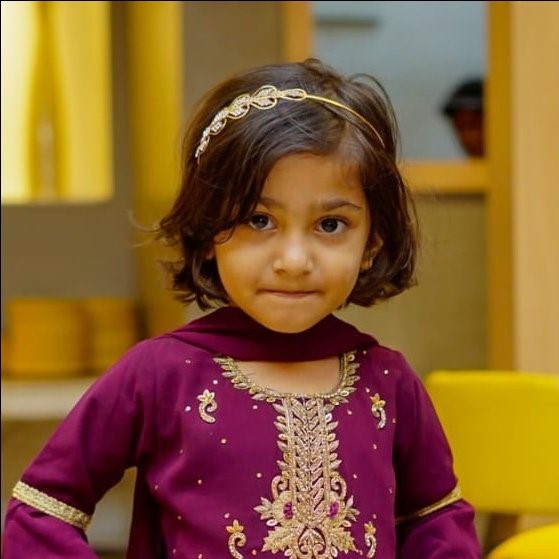4.8 ★
Kidzee Hoodi Circle, Basavanna Nagar, Bengaluru

Kidzee NUVO has been especially crafted for children between the age group of 1-2 years, keeping in mind the holistic development of the children at this age. The program aims to strengthen the bond between the child and care giver and to engage toddlers in various structured activities. This will help toddlers to interact with their peers and get acquainted to the preschool set-up. Children are required to attend the classes alongwith their parents or caregivers for the initial months. The program offers a structured learning and developmental experience to the kids including rhymes, free play, sensory activities, art & craft, scrap book activities, sand & water activities and outdoor & indoor play.

Quality education in the early years of preschool sets a firm foundation in the overall development of a child. At Kidzee, the nursery curriculum provides a right array of activities to help children move towards achieving their early learning goals. In Nursery, children are engaged in school readiness activities such as reading, writing, counting, number recognition and problem solving in a fun filled but purposeful manner. Children are encouraged to corroborate their learning through collaborative activities in the areas of dramatics, science and arts.

The transition from preschool to primary school is a crucial time of change for both children as well as their parents. At Kidzee, the Kindergarten (K.G.) curriculum ensures smooth transition to formal schooling with meaningful and progressive learning experiences. In addition to age-appropriate activities in Kindergarten, which prepare a child for success in formal school; various other activities are conducted in the areas of language, numbers, general knowledge, music, art in a planned manner throughout the program. Through these activities, children learn the alphabet and letter sounds, numbers and simple math and master early writing skills. Furthermore, each child’s development is measured thrice in a year through well designed assessment as part of Kidzee’s unique pedagogy iLLUME. iLLUME assessment is designed to motivate a child in nurturing his unique potential.

Embraced in a lifestyle that is beaming with options, we all get to frequent malls and supermarkets with aisles full of foods spoiling us with choices like never before. Add to that food offered by street vendors, again, in a bewildering variety of temptations. Now, as parents, what food shall we choose for our children? Well, the bottom-line is, the simplest foods are still the best for children. Whole grains, fresh fruits and vegetables, unprocessed meats, and natural dairy goods have always been and will always be the best choices to make. However, the conflict resides in the battle between taste buds and health needs. Let’s face it, we, as urban twenty-first century parents, encourage a great deal of children’s personal preferences in food. The reasons are evident: children these days are more opinionated about their personal likes and dislikes; moreover, readymade delicacies are at the finger tips, thanks to the countless dial-ins in the neighborhood – an easy way out to pamper taste buds with mouth-watering indulgences. So, what do we do to strike a balance between the delicious and the nutritious? One simple thing to do is to read the labels before purchasing food items. Most labels indicate the contents of additives, preservatives, emulsifying agents, and so on. The ground rule is, lesser the added components, better are the nutritional values. For example, a loaf of whole grain bread with basic ingredients is a better choice over a fancy loaf with a whole paragraph of refined ingredients. So stick to the basics or the naturals, in as unprocessed forms as possible. Children should be encouraged at a very early age to eat natural produce. It is far better to have your child chew through an orange rather than picking that convenient carton of juice. Instant noodles are yet another favorite grub with children, but you will think twice as parents if you visited the inside story. An anti-freeze ingredient called propylene glycol, used to retain the optimum level of moisture in instant noodles, is believed to be weakening the immune system. Add to that the flavoring agents, the high sodium content, and the wax – certainly not best friends to health. Stick to the basic and the wholesome. Correct food choice is not about recipes, but about ingredients. Instead of those sodium and chemical laden pizza sauces, consider coming up your own version. All you need is a fusion of extra virgin cold pressed olive oil, some Italian seasoning, and natural taste builders like tomatoes, olives, etc. And there you go, load your home-made pizza with your loved one’s favorite toppings! Sneak in an enormous amount of vegetables onto the disc, along with a generous spread of grilled proteins like chicken or lean fish. This will make nothing less than a visual, gustatory, and nutritive treat to your child. Avoid loading down with more than just a thin layer of cheese. When the tangy tomatoes and the vegetables bubble together in the oven, the freshness of the ingredients and the enhanced flavors will make your child not notice the lack of cheese or the big portion of veggies they ate. And you can pat yourself on the back for a job done well!

Music Children love music! Whether it’s soft and soothing or a lively tune, children feel it both physically and emotionally. Music is an outlet to stimulate the mind. It affects the child in all the areas of development right from the time he/she is born. Most importantly, children experience great joy and pleasure listening to music. With minimum effort, a teacher can bring happiness to children each day just by providing the opportunity to do something with music. Children respond to music enthusiastically and spontaneously without any inhibition. It is difficult to imagine a preschool classroom having no time for rhymes or music. Think of the song ‘Old Mac Donald’. It is such an effective way of introducing children to the world of farm animals and the sounds they make. BREAKTIMES AT SCHOOL Worried about snack times and break times at School? Based on the school timings and the travel involved, you can pack some dry fruits or quick healthy bites for your little ones. After the settling phase, our facilitators will provide you with a timetable and a Menu chart for break time. This is done to ensure that your child eats healthily at school and we maintain consistency in what, all the children eat during the break time.

TOYS for CHILDREN Play is a natural activity for every young child. It provides many opportunities for children to learn and grow physically, mentally and socially. If play is the child’s work then toys are the child’s tools. They are an important learning tool for kids. We understand the Requirement of children n concern of parents thats the reason we were awarded best preschool in Najafgarh,Delhhi in 2018-2019. Children use toys to learn about themselves and things around them. Toys aim at enhancing learning throughout all the developmental areas. The learning materials and environment gives the children an opportunity to engage themselves in different kinds of play – alone or in groups. It also gives children a wide range to choose from, thereby building confidence, opportunities to make decisions and choices. As children manipulate and play with toys their muscle control and strength is developing, so is their eye hand coordination. Toys provide children the opportunity to investigate and explore. Children can learn about size, shapes, colour, numbers, letters of the alphabet and much more. While selecting toys keep in mind the age of the child. Is the toy for an infant or is it for a preschooler? Selecting age appropriate toys is important, as it needs to be interesting and engaging for the child. Toys need to be colourful and bright. Check for the quality. Select toys that are durable and safe. Toys must not have sharp or pointed edges. The materials used must be safe too, with no danger of chocking or suffocation.
/uploads/school/not_verified_new.png)





